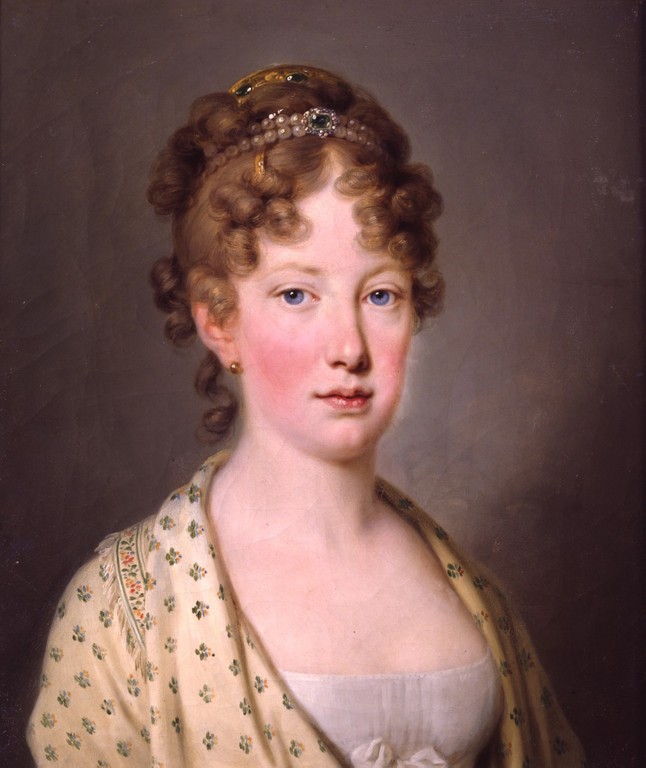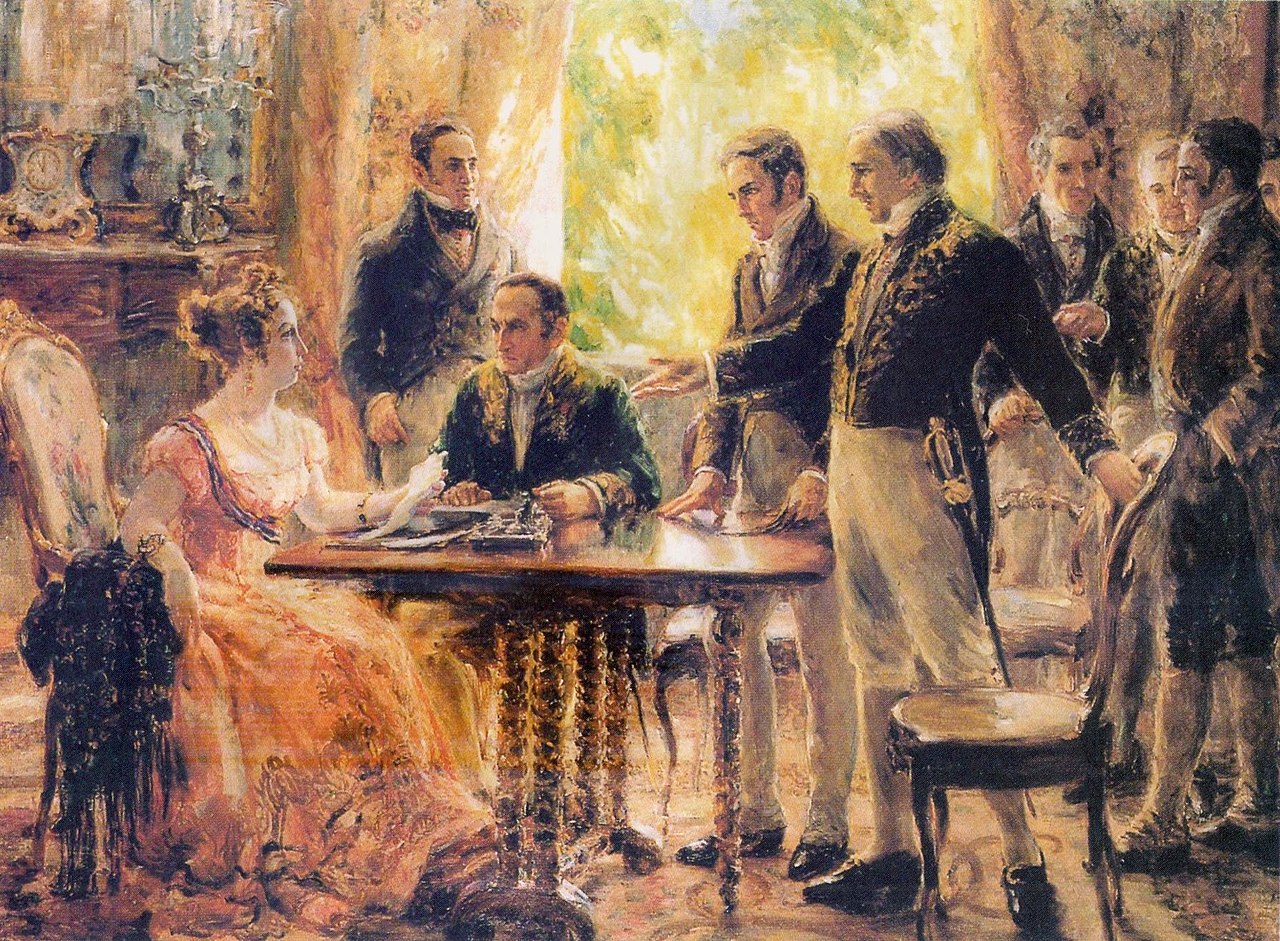by Susan Flantzer © Unofficial Royalty 2019

Archduke Maximilian of Austria, Emperor of Mexico; Credit Wikipedia
A younger brother of Emperor Franz Joseph I of Austria, Maximilian was one of the two Emperors of Mexico. Both were deposed by force and then executed. The other, Agustín de Iturbide, reigned as Emperor Agustín I from May 19, 1822 – March 19, 1823.
Maximilian was born an Archduke of Austria on July 6, 1832, in Schönbrunn Palace in Vienna, Austria. He was the second of the five children and the second of the four sons of Archduke Franz Karl of Austria, son of Emperor Franz I of Austria, and Princess Sophie of Bavaria, daughter of King Maximilian I Joseph of Bavaria.
Maximilian had four siblings:
- Franz Joseph I, Emperor of Austria (1830 – 1916), married Elisabeth of Bavaria, had three daughters and one son
- Karl Ludwig, Archduke of Austria (1833 – 1896), married (1) Princess Margaretha of Saxony, no children (2) Princess Maria Annunziata of Bourbon-Two-Sicilies, had three sons and one daughter including Archduke Franz Ferdinand (3) Infanta Maria Theresia of Portugal, had two daughters
- Maria Anna, Archduchess of Austria (1835 – 1840), died in childhood from an epileptic seizure
- Ludwig Viktor, Archduke of Austria (1842 – 1919), unmarried

Maximilian with his brothers: From left to right: Archduke Ludwig Viktor, Emperor Franz Joseph, Archduke Karl Ludwig, Archduke Maximilian; Credit – Wikipedia
Maximilian was educated with his elder brother Franz Joseph. They were first taught by their governess Baroness Louise von Sturmfeder. In 1836, Count Heinrich Bombelles became responsible for the education of the young archdukes and created a rigorous course of study. The archdukes were expected to study 18 hours a week when they were just six years old. Their study hours each week increased to 36 hours at age eight and 46 hours at age 11. Franz Joseph became seriously ill at the age of 13 due to the stress of his studies. However, the archdukes’ rigorous education continued until they were studying 56 hours a week. It was important for Franz Joseph and Maximilian to learn the languages of the Austrian empire, and so they studied not only French, Latin, and Greek, but also Hungarian, Czech, Italian, and Polish. They also studied mathematics, physics, history, geography, jurisprudence, political science, and physical education.

Maximilian, circa 1850: Credit – Wikipedia
In 1852, Maximilian, then serving in the Austrian navy, made a stopover in Portugal, where he became reacquainted with Princess Maria Amélia of Brazil, daughter of Emperor Pedro I of Brazil and his second wife Amélie of Leuchtenberg. Their mothers were both members of the Bavarian royal family and Maximilian and Maria Amélia had met as children at a family reunion in Munich. Maximilian and Maria Amélia fell in love and were betrothed. However, their engagement was never made official due to Maria Amélia’s death from tuberculosis in February 1853.

Charlotte and Maximilian during their first year of marriage; Credit – Wikipedia
In May 1856, Maximilian met Princess Charlotte of Belgium, daughter of Leopold I, King of the Belgians, and a first cousin to both Queen Victoria of the United Kingdom and her husband Prince Albert. Maximilian and Charlotte fell in love and the couple married at the Royal Palace of Brussels in Belgium on July 27, 1857. Unfortunately, Charlotte and Maximilian had no children.
Emperor Franz Joseph appointed his brother Maximilian Viceroy of the Kingdom of Lombardy-Venetia, now part of Italy, but then part of the Austrian Empire. There the couple built Miramare Castle in Trieste. In 1859, Emperor Franz Joseph, angered by his brother’s liberal policies, dismissed him as Viceroy. Shortly afterward, Austria lost control of most of its Italian possessions, and Maximilian and Charlotte then retired to Miramare Castle.

Miramare Castle; Photo Credit – By Valleo61 – Own work, CC BY-SA 3.0, https://commons.wikimedia.org/w/index.php?curid=22924475
In 1859, Mexican monarchists approached Maximilian with a proposal to become Emperor of Mexico which Maximilian did not accept. After the French intervention in Mexico in 1861, Maximilian changed his mind. At the invitation of Napoleon III, after the French capture of Mexico City and a French-staged referendum that supposedly confirmed the will of the people, Maximilian agreed to accept the crown. On April 10, 1864, in the great salon of Miramare Castle, a Mexican delegation officially informed Maximilian of the referendum’s results, without telling him that the French army had intimidated the voters. Maximilian declared to the Mexican delegation that he accepted the crown from the hands of the Mexican nation and swore to ensure by all means the well-being, prosperity, independence, and integrity of the Mexican nation.

Mexican Delegation appoints Maximilian of Austria Emperor of Mexico; Credit – Wikipedia
Emperor Maximilian and Empress Carlota, as Charlotte was now called, landed at Veracruz, Mexico on May 21, 1864, and received a cold reception from the townspeople. Veracruz was a liberal town and the liberal voters were opposed to having Maximilian being their Emperor. He had the backing of Mexican conservatives and Napoleon III, but from the beginning, he was involved in serious difficulties. The liberal forces led by Benito Juárez, the former president deposed by the French, refused to recognize his rule. There was continuous warfare between the French troops and the forces of Juárez who wanted a republic.

Emperor Maximilian of Mexico, circa 1865; Credit – Wikipedia
After the American Civil War ended, the French withdrew their troops from Mexico under pressure from the United States. After that, Maximilian could not hold out against the popular Juárez as his request for help from Europe remained unanswered. Charlotte traveled to Europe to ask for help from Napoleon III and Pope Pius IX, but the only hope she got was a promise from the Pope to pray for her and her husband. Maximilian then wanted to leave Mexico but changed his mind after receiving a letter from his mother, which prompted him to stay.
Maximilian and his last troops barricaded themselves in the city of Queretaro, which fell after a siege on May 14, 1867. 34-year-old Maximilian was condemned to death by a court of war and on June 19, 1867, he was executed by a firing squad along with two of his faithful Mexican generals. Before the shooting, Maximilian assured the soldiers that they were only doing their duty, gave them gold coins, and asked them to aim precisely and spare his face, so that his mother could identify his body.

Édouard Manet’s Execution of Emperor Maximilian (wearing the hat) (1868–1869); Credit – Wikipedia
Eventually, Maximilian’s remains were returned to Austria, where seven months after his execution, on January 18, 1868, they were buried in the Kaisergruft (Imperial Crypt) in the Capuchin Church in Vienna.

Tomb of Maximilian; Photo Credit – Susan Flantzer
Charlotte survived Maximilian by 60 years but fell into a state of insanity after his death. Today, it is impossible to determine the exact nature of her mental illness. Charlotte spent the rest of her life at Bouchout Castle in Meise, Belgium where her brother King Leopold II oversaw her care. She died from pneumonia at Bouchout Castle on January 19, 1927, at the age of 86, and was buried in the Royal Crypt at the Church of Our Lady of Laeken, the burial place of the Belgian Royal Family.
This article is the intellectual property of Unofficial Royalty and is NOT TO BE COPIED, EDITED, OR POSTED IN ANY FORM ON ANOTHER WEBSITE under any circumstances. It is permissible to use a link that directs to Unofficial Royalty.
Works Cited
- De.wikipedia.org. (2017). Charlotte von Belgien. [online] Available at: https://de.wikipedia.org/wiki/Charlotte_von_Belgien [Accessed 12 Sep. 2017].
- En.wikipedia.org. (2017). Carlota of Mexico. [online] Available at: https://en.wikipedia.org/wiki/Carlota_of_Mexico [Accessed 12 Sep. 2017].
- En.wikipedia.org. (2017). Maximilian I of Mexico. [online] Available at: https://en.wikipedia.org/wiki/Maximilian_I_of_Mexico [Accessed 12 Sep. 2017].
- Flantzer, S. (2017). Princess Charlotte of Belgium, Empress Carlota of Mexico. [online] Unofficial Royalty. Available at: https://www.unofficialroyalty.com/princess-charlotte-empress-carlota-of-mexico/ [Accessed 6 Aug. 2018].
- Fr.wikipedia.org. (2017). Charlotte de Belgique. [online] Available at: https://fr.wikipedia.org/wiki/Charlotte_de_Belgique [Accessed 12 Sep. 2017].



















































